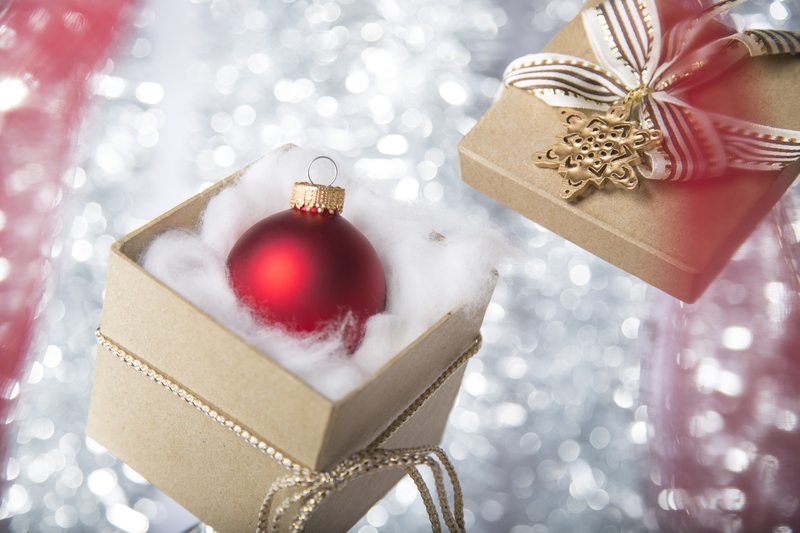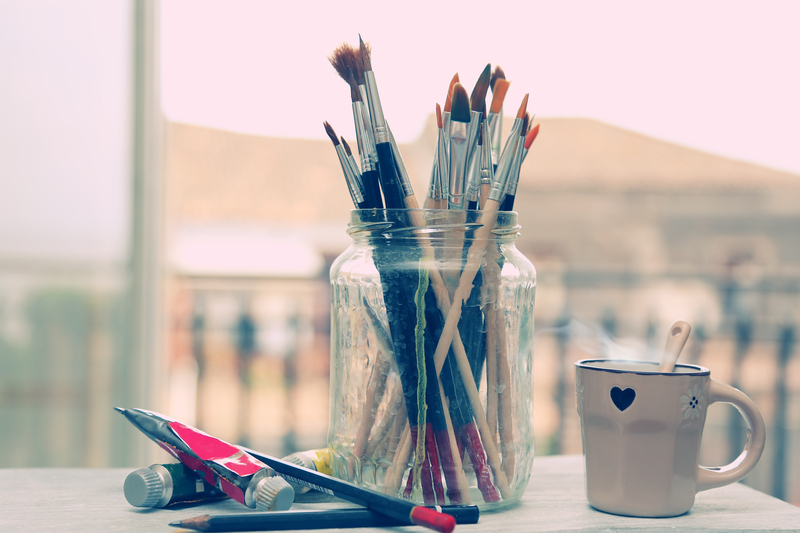Creative Ways to Dispose and Recycle Your Old Pots and Pans
Is your kitchen cluttered with battered pots and pans that are past their prime? You're not alone! As cookware gets scratched, warped, or outdated, many wonder what to do with old pots and pans. Tossing them in the trash isn't the only option--there's a world of creative, eco-friendly, and even rewarding ways to dispose of and recycle your old cookware. In this comprehensive guide, we'll explore innovative solutions to repurpose, donate, recycle, and upcycle your obsolete kitchenware, helping you make sustainable choices while freeing up space in your kitchen!

Why Properly Dispose of Old Pots and Pans?
Before diving into the many creative ways to recycle or dispose of old pans, let's consider why responsible disposal matters:
- Environmental impact: Non-biodegradable materials like metal, Teflon, and ceramic can sit in landfills for centuries.
- Resource conservation: Recycling preserves valuable metals and reduces the need for new resources.
- Community benefit: Donating usable cookware can help local charities, shelters, or families in need.
- Creative potential: Old pots and pans open up unique opportunities for DIY crafts and home decor!
Can You Recycle Old Pots and Pans?
One of the first questions people ask is: Are old pots and pans recyclable? The answer is a cautious yes. Most cookware is made of metals like aluminum, stainless steel, or cast iron--all of which can be recycled. However, there are a few important points to consider:
- Nonstick coatings: Pans with Teflon or other nonstick coatings often need special handling due to the chemicals involved.
- Handles and lids: Remove plastic or wooden components if possible, leaving just the metal for recycling.
- Local regulations: Always check your local recycling program's guidelines since rules can differ.
How to Prepare Old Cookware for Recycling
To recycle old pots and pans successfully, follow these steps:
- Clean Thoroughly: Remove all food residue and grease. Quick scrubbing will make pans easier to process at the recycling center.
- Separate Materials: If you can remove plastic, glass, or wooden handles and lids, do so. Only the metal parts should go in most recycling bins.
- Check for Local Scrap Yards: Some curbside services won't accept bulky cookware, but scrap metal yards almost always do.
Tip: Call ahead to your local scrap yard or recycling center to confirm they accept the type of metal your pans are made from.
Where to Recycle Old Pots and Pans
Don't let your old cookware go to waste! Here's a list of places where you can responsibly recycle your old pots and pans:
- Scrap Metal Recyclers: Most towns have one or more scrap metal facilities that will take aluminum, steel, or copper cookware--sometimes even paying you for the material!
- Local Recycling Centers: Check with your municipal recycling program to see if they accept cookware or direct you to a third-party facility.
- Big-Box Stores: Some retailers, like IKEA or Williams Sonoma, occasionally run recycling events for old kitchenware. Stay tuned to community announcements!
- Charity Shops and Thrift Stores: If your pots and pans are still usable, many secondhand shops or donation centers will accept them. Be sure they're clean and in good condition.
Pro Tip: If your pans have special coatings, ask about any restrictions before you deliver them to recycling facilities.
Online Recycling Platforms
Websites like Earth911 or RecycleNation help you find recycling locations for household goods, including cookware, by simply entering your zip code.
Creative Ways to Upcycle Old Pots and Pans
If you're feeling crafty, upcycling old pots and pans is a fantastic--and fun--way to keep them out of the landfill. Here are inventive ideas for transforming your battered cookware into stunning decor or practical household items.
1. Planters and Garden Containers
- Outdoor Planters: Fill old pots, pans, or colanders with soil and use them as planters for herbs, succulents, or flowers. Drill a few holes in the bottom for drainage, paint for a pop of color, and arrange them in your garden or patio.
- Hanging Baskets: Attach strong wire or rope to a lightweight pan and suspend it from a tree or porch, creating a whimsical hanging garden.
2. Bird Feeders and Baths
- Bird Bath: A shallow, wide pan makes an ideal bird bath when propped atop an old stool or mounted on a stump.
- Feeder: Fill a skillet with seeds and place it in the garden, or hang a saucepan by its handle for birds to perch on.
3. Wall Decor
- Vintage Gallery Wall: Arrange mismatched or ornate cookware on your kitchen or dining room wall for a farmhouse-style mural.
- Chalkboard Message Board: Paint the inside of an old frying pan with chalkboard paint and use it for notes or menus.
4. Clocks, Shelves, and Lights
- Wall Clock: Insert clock hands into the base of a decorative pan for a funky timepiece.
- Floating Shelves: Mount pots sideways on the wall for quirky cubbies or shadow boxes.
- Pendant Lights: Enlist a handy friend to help you wire and invert a colander or metal pan into a unique kitchen lamp.
With a little creativity, your old pots and pans can enjoy a new life--adding personality and charm to your home or garden while reducing waste!
Donation: A Second Chance for Usable Cookware
If your cookware is still safe and functional, donating is a responsible--and generous--way to dispose of old pots and pans. Even if they're cosmetically worn, they can make a world of difference to someone in need.
- Charity Thrift Stores: Goodwill, Salvation Army, and local charities often gratefully accept gently used kitchen items.
- Homeless Shelters and Food Banks: Many shelters run kitchens and are always in need of extra pots and pans.
- Community Centers or Schools: Cooking classes, after-school programs, or cafeterias may appreciate the donation.
- Online Community Groups: Use apps like Freecycle, Facebook Marketplace, or Nextdoor to connect with locals seeking affordable cookware.
Remember: Always ensure donations are clean and safe to use. If you're in doubt about the integrity of a nonstick coating (chipped or flaking), err on the side of safety and recycle instead.
The Environmental Benefits of Recycling Pots and Pans
Why go the extra mile to recycle your old pots and pans? Because every pot, pan, and lid that gets recycled helps limit our need for new resources. Aluminium and steel, in particular, are infinitely recyclable without losing quality, meaning your tired old frying pan could become part of a brand new car, bicycle, or skillet!
- Reduces landfill waste: Metal cookware can take hundreds of years to decompose in a landfill.
- Saves energy: Recycling metal uses far less energy than mining and refining new materials.
- Supports a circular economy: Keeps materials in use and out of the waste stream.
Responsible Disposal for Non-Recyclable Pots and Pans
While most metal cookware is recyclable, some specialty items may not be accepted by recycling facilities:
- Nonstick Cookware: Some centers cannot accept pans with Teflon or ceramic coatings. Seek out hazardous waste collection days or specialty recycling events.
- Heavily Damaged or Broken Items: If your cookware is too worn out (with sharp edges, missing chunks, or extensive rust), recycle as scrap metal whenever possible, or dispose responsibly if required.
- Glass Lids: Tempered glass can be tricky--check with your local recycler, as some accept it while others do not.
Never burn or bury cookware--this can release harmful chemicals and damage the environment.
Step-by-Step Checklist: What to Do With Old Pots and Pans
- Audit your cookware: Decide what's truly at the end of its life and what can be reused, upcycled, or donated.
- Clean thoroughly: Scrub all parts before recycling or donating.
- Remove non-metal elements: Disassemble handles and lids if possible.
- Research local recycling guidelines: Look up municipal rules and nearby scrap yards or collection events.
- Explore upcycling ideas: Get creative with planters, arts, and crafts if you're inspired!
- Donate usable items: Find local organizations or online groups that can use your kitchenware.

Frequently Asked Questions About Disposing Old Cookware
Can you put pots and pans in the curbside recycling?
No--most curbside programs do NOT accept bulky metal items or cookware. Instead, take them to a scrap metal recycling center or special collection event.
What if my pans are nonstick?
Many centers do not accept nonstick coatings (Teflon or ceramic). Contact your recycling provider or ask about hazardous collection options.
What about stainless steel or aluminum?
Yes! Both are highly recyclable. Remove plastic parts, clean thoroughly, and drop off at a scrap metal facility.
Can I sell old pots and pans?
If they're valuable (vintage, cast iron, or high-end brands), try selling online via eBay, Craigslist, or local buy/sell groups.
Are rusty pans safe to donate?
Pans with minor rust can sometimes be refurbished, but if they're heavily corroded or damaged, it's better to recycle as scrap.
Conclusion: Give Your Old Pots and Pans a New Life!
As you can see, there are endless creative and eco-friendly ways to dispose and recycle your old pots and pans. By recycling, donating, or upcycling, you'll free up kitchen space and do your part for the planet. Whether you turn a rusty skillet into a flower pot or support your local community with a cookware donation, every small action adds up to a cleaner, greener world.
So the next time you upgrade your kitchen, don't just toss that old pan--choose one of these creative recycling ideas for pots and pans, and enjoy the satisfaction of sustainable living!
